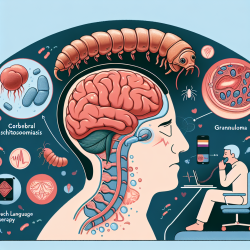Empowering Speech-Language Pathologists Through Citation Dynamics
In the ever-evolving field of speech-language pathology, making data-driven decisions is crucial for ensuring the best outcomes for children. One way to enhance our understanding and application of research is by examining citation dynamics, as explored in the research article "Characterizing and Modeling Citation Dynamics" by Eom and Fortunato (2011). This study provides insights into how citation patterns can inform our practice and encourage further research, ultimately benefiting the children we serve.
Understanding Citation Dynamics
The research article delves into the intricacies of citation networks, which represent the relationships between research papers. By analyzing these networks, the authors aim to uncover the dynamics of scientific productivity. The study highlights the importance of understanding citation distributions, which are often broad and vary across disciplines and time periods. This variability is crucial for practitioners to consider when applying research findings to their practice.
Applying Citation Dynamics in Practice
For speech-language pathologists, understanding citation dynamics can be instrumental in several ways:
- Identifying Influential Research: By recognizing citation bursts—periods of rapid citation accumulation—practitioners can identify influential studies that may offer valuable insights or innovative approaches.
- Evaluating Research Impact: Citation dynamics can help practitioners assess the impact and relevance of research over time, ensuring that they rely on robust and current evidence in their practice.
- Encouraging Further Research: Awareness of citation dynamics can inspire practitioners to contribute to the field by conducting research that addresses gaps or builds upon existing influential studies.
Encouraging Data-Driven Decisions
Data-driven decision-making is at the heart of effective speech-language pathology practice. By incorporating insights from citation dynamics, practitioners can make informed decisions that are backed by the latest and most relevant research. This approach not only enhances the quality of care provided to children but also fosters a culture of continuous learning and improvement among practitioners.
Conclusion
Understanding and applying citation dynamics is a powerful tool for speech-language pathologists. By leveraging these insights, practitioners can enhance their skills, contribute to the field, and ultimately improve outcomes for the children they serve. To delve deeper into the research and explore the full findings, please follow this link: Characterizing and Modeling Citation Dynamics.










